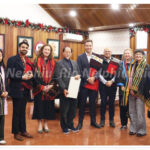New Delhi, 29 August (MTNews): The Supreme Court sought a timeframe from the Centre on Tuesday, 29 August, to restore the statehood of Jammu and Kashmir, which is currently bifurcated into two Union Territories (UTs), along with a roadmap for this progression. The matter that challenges the abrogation of Article 370, which granted special status to Jammu and Kashmir, is being heard by a five-judge Constitution bench led by Chief Justice of India, DY Chandrachud. Solicitor General Tushar Mehta informed the court that the current status of Jammu and Kashmir as union territories was not a “permanent thing.”
“The union territory status of Jammu and Kashmir is not permanent. As far as Ladakh is concerned, its UT status is going to remain for some time,” Mehta said, adding that an elaborate statement on this vexatious political issue will be made in court on 31 August.
Taking note of Mehta’s arguments, the bench questioned, “How temporary is this? And when will elections be held in Jammu and Kashmir?” The bench further inquired, “Is there a roadmap? You need to show us that. You have to make a statement before us to demonstrate how you can convert a state into a UT and how long this arrangement will continue. The restoration of democracy is important,” the bench emphasized.
The court also asserted that the lack of electoral democracy cannot be allowed to persist indefinitely. “This must come to an end… provide us with a specific timeframe for when you will restore actual democracy. We want to document this,” the bench stated, urging Mehta and Attorney General R Venkataramani to seek instructions from the political executive and report back to the court.
It may be mentioned here that as many as 23 petitions were filed in the Supreme Court against the abrogation of Article 370. A wide range of lawyers, activists, politicians and retired civil servants are among the petitioners.



